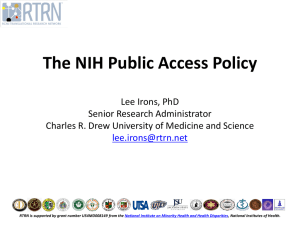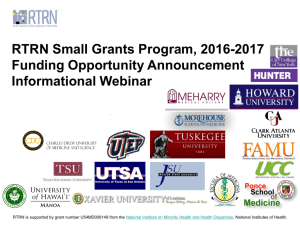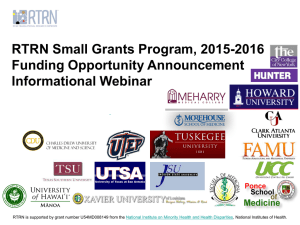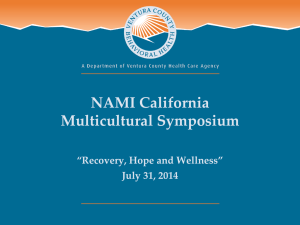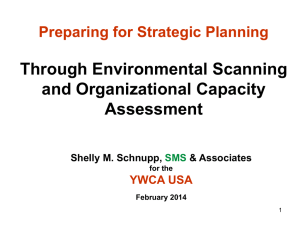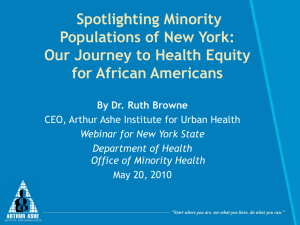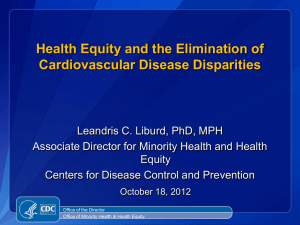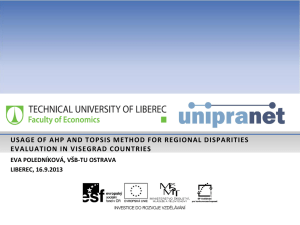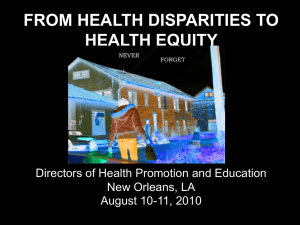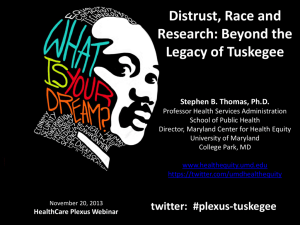Community Engaged Research - RTRN Small Grants Program
advertisement
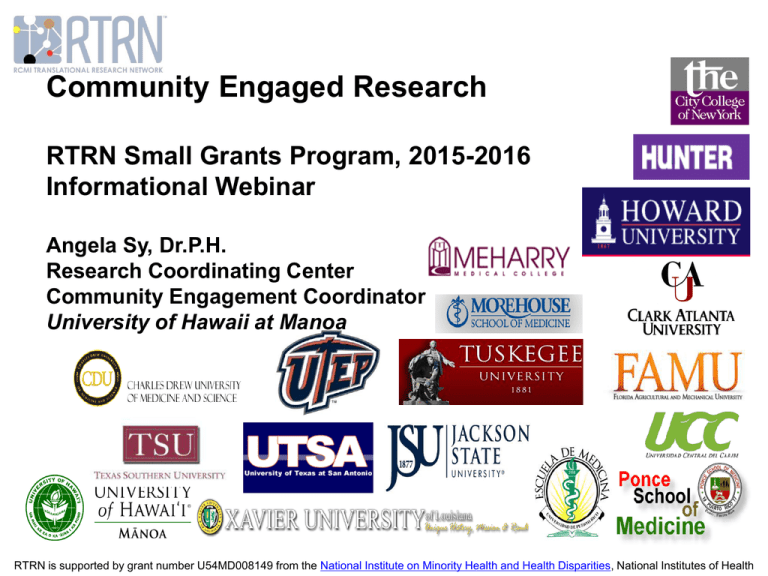
Community Engaged Research RTRN Small Grants Program, 2015-2016 Informational Webinar Angela Sy, Dr.P.H. Research Coordinating Center Community Engagement Coordinator University of Hawaii at Manoa RTRN is supported by grant number U54MD008149 from the National Institute on Minority Health and Health Disparities, National Institutes of Health Community Engaged Research CDC, 1997; NIH, 2011 Definitions • The process of working collaboratively with and through groups of people affiliated by geographic proximity, special interest, or similar situations to address issues affecting the well-being of those people. • It is a powerful vehicle for bringing about environmental and behavioral changes that will improve the health of the community and its members. • It often involves partnerships and coalitions that help mobilize resources and influence systems, change relationships among partners, and serve as catalysts for changing policies, programs, and practices RTRN is supported by grant number U54MD008149 from the National Institute on Minority Health and Health Disparities, National Institutes of Health. RTRN is supported by grant number U54MD008149 from the National Institute on Minority Health and Health Disparities, National Institutes of Health. STAKEHOLDER ENGAGEMENT “LIGHT” STAKEHOLDER ENGAGEMENT Source: Nass, Levine, and Yancy. Methods for Involving Patients in Topic Generation for Patient-Centered Comparative Effectiveness Research –An International Perspective RTRN is supported by grant number U54MD008149 from the National Institute on Minority Health and Health Disparities, National Institutes of Health. Continuum of Community Engaged Research: Wallerstein, 2014 N.M. CARES Health Disparities Center University of New Mexico RTRN is supported by grant number U54MD008149 from the National Institute on Minority Health and Health Disparities, National Institutes of Health. Traditional Research Process Step 1: Problem Identified by Researcher Step 2: Research Plan Developed Community Selected Funds Secured Step 3: Intervention and Data Collected Data Collection Instruments Designed Community Subjects Recruited Step 4: Data Analyzed Step 5: Data Interpreted, Papers Written & Disseminate Results to Peers and Academic Community Kiger, 2014, SC CTSI RTRN is supported by grant number U54MD008149 from the National Institute on Minority Health and Health Disparities, National Institutes of Health. Community-Engaged Approach Step 1: Problem Identified by Stakeholder Could be community member or researcher Step 2: Research Plan Developed Meetings with community members and researchers to determine best approach Step 3: Intervention or Data Collection All parties involved in design of data-collection instruments Community assists in participant recruitment Step 4: Analyze Data – Bring Results to Community Step 5: Interpretation of Data with Community Step 6: Disseminate Results to Community AND Academia Kiger, 2014, SC CTSI RTRN is supported by grant number U54MD008149 from the National Institute on Minority Health and Health Disparities, National Institutes of Health. RTRN Collaborative Community Engaged Research In regard to heath outcomes, what is happening and working in our communities that is unique and community specific, and what is common or generalizable across communities? • Cross site, community engaged, translational research comparisons • Application, or use of tools, e.g., assessment, evaluation, from one community to another • Move to translation from basic to clinical and community research RTRN is supported by grant number U54MD008149 from the National Institute on Minority Health and Health Disparities, National Institutes of Health.
